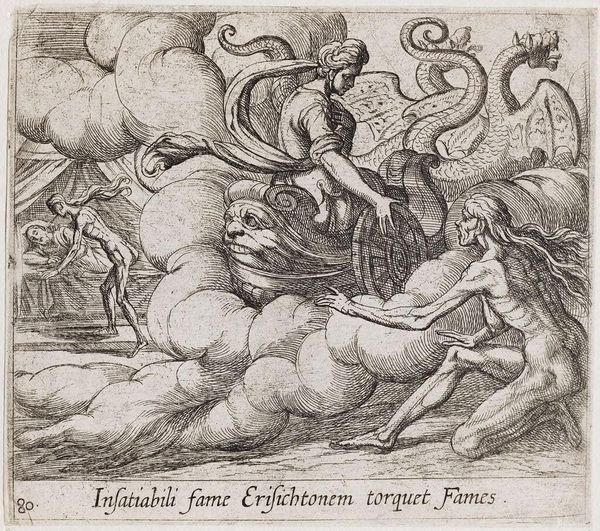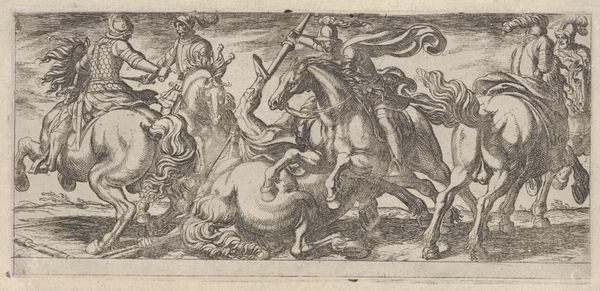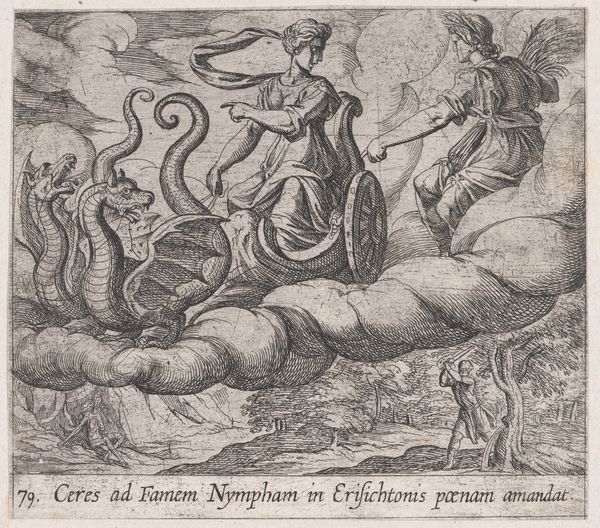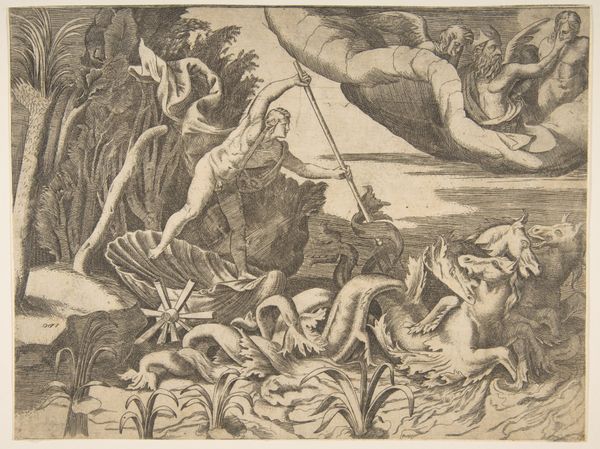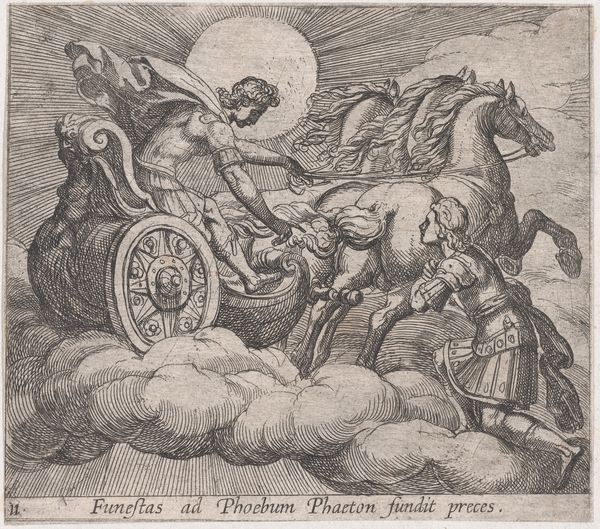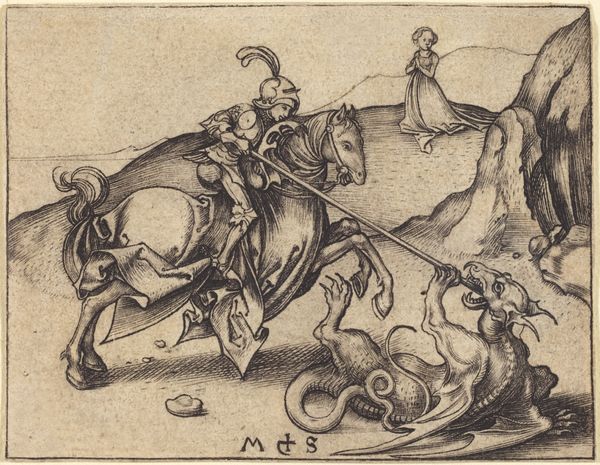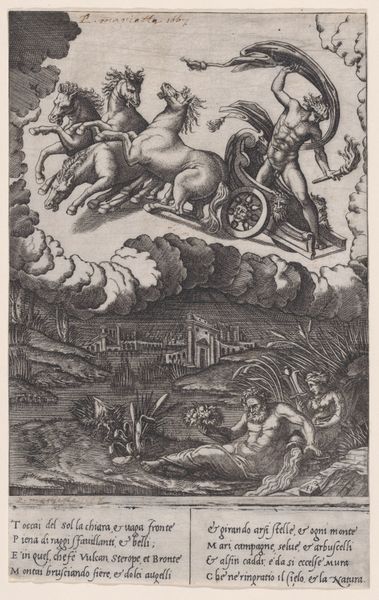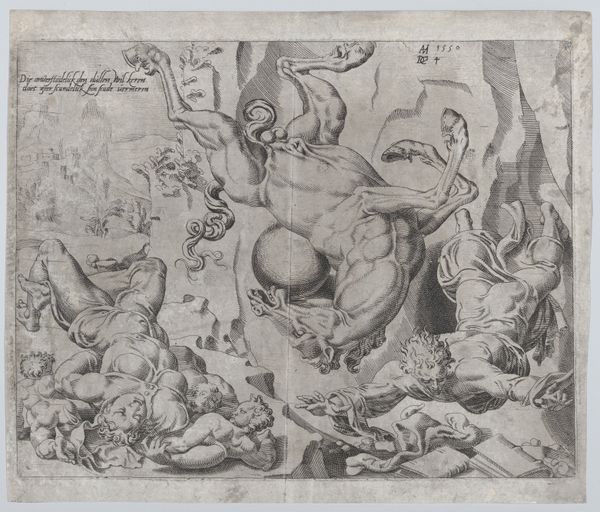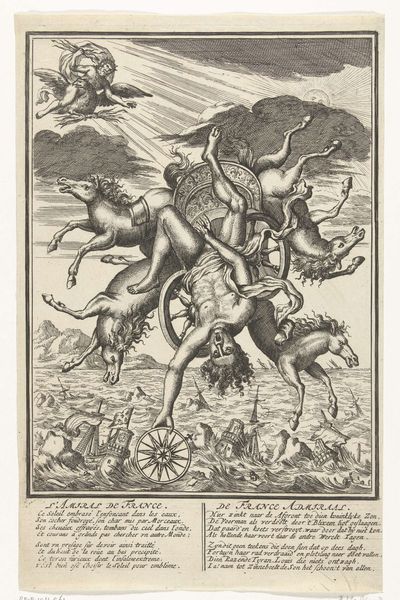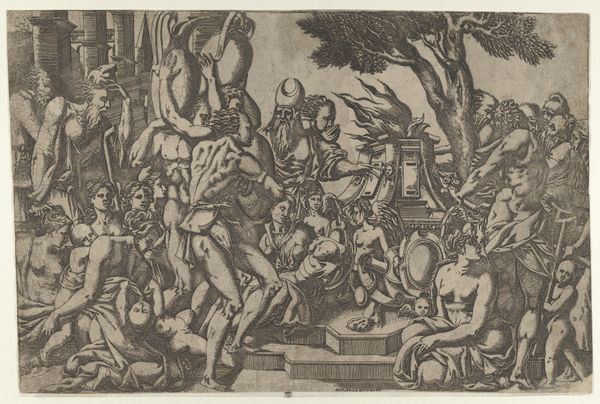
Plate 80: Ceres' Nymph Telling Famine to Strike Erysichthon (Insatiabili fame Erisichtonem torquet Fames), from Ovid's 'Metamorphoses' 1606
0:00
0:00
drawing, print, engraving
#
drawing
#
medieval
#
allegory
#
narrative-art
#
baroque
# print
#
classical-realism
#
figuration
#
line
#
history-painting
#
engraving
Dimensions: Sheet: 4 in. × 4 9/16 in. (10.2 × 11.6 cm)
Copyright: Public Domain
Curator: This intense little engraving by Antonio Tempesta, created in 1606, is Plate 80 from Ovid's *Metamorphoses*, and depicts the scene where Ceres' nymph commands famine to punish Erysichthon. It's part of the Met's collection. Editor: My initial reaction is…claustrophobic. There’s so much packed into this tiny space – figures tumbling over each other, dragons lurking... it’s a frenzy of line work. And so *dark* in its themes. Curator: The density definitely adds to the emotional weight, doesn’t it? Tempesta really captures the brutal desperation of the story. Erysichthon, cursed with insatiable hunger for cutting down Ceres’ sacred grove, is literally eating himself alive – feeding into an unending cycle. Editor: The Famine figure is…terrifying. All sharp angles and emaciated limbs. The way she claws at the central cloud-like form, almost begging for its embrace – it’s grotesque and magnetic all at once. Tell me more about that central figure of Ceres' nymph. Curator: The nymph glides above a monstrous, toothy visage in the clouds, acting almost like a herald of the impending doom. There's almost a detachment in her pose, though. An embodiment of divine justice, perhaps, rather than direct cruelty. Editor: It’s the detachment that unnerves me the most, I think. It speaks to a larger commentary on unchecked greed, where divine figures almost enable the consequences, watching impassively as the mortal world unravels. What really resonates is how he weaves the mythological narrative into the social fabric of 17th-century thought on foodways. Curator: Right, as these mythological tales continue to speak volumes today. What strikes me is how he captured a universal, primal horror through a distinct Baroque aesthetic. You have this collision of the classical world and swirling intensity... Editor: So it's about this moment between classical influence and heightened emotion. Perhaps he invites the viewer to meditate not just on Erysichthon’s punishment, but to reflect on society and politics in our own consumption and actions. A tiny engraving holding so much… famine itself, maybe? Curator: Perhaps the piece serves as a mirror.
Comments
No comments
Be the first to comment and join the conversation on the ultimate creative platform.
